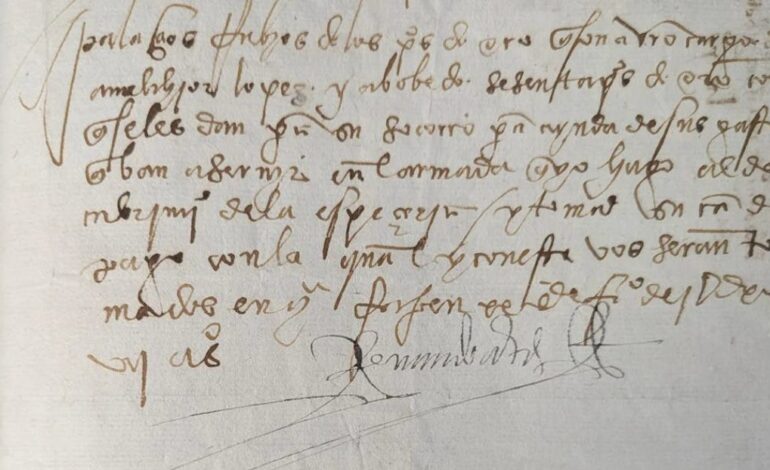FBI Repatriates 16th-Century Document Signed by Hernán Cortés

A historic document signed by Spanish conquistador Hernán Cortés has been returned to Mexico after being missing for decades. The 16th-century manuscript was officially repatriated on August 13, 2023, as announced by the Federal Bureau of Investigation (FBI). This document, described as a “priceless cultural artifact,” was part of a ceremonial handover to the Mexican government.
Special Agent Jessica Dittmer, a member of the FBI’s Art Crime Team, confirmed that the manuscript page, dated February 20, 1527, was originally stolen from Mexico’s national archives during the 1980s or 1990s. The FBI noted that due to the multiple transactions involving the document since its disappearance, no charges will be filed related to the theft. Dittmer emphasized the importance of such artifacts, stating, “Pieces like this are considered protected cultural property and represent valuable moments in Mexico’s history.”
This repatriation marks the second time the FBI has returned a document signed by Cortés. In July 2023, the agency returned a letter from Cortés, dated April 1527, which authorized the purchase of rose sugar. The successful return of the manuscript was facilitated through collaboration among the FBI, the New York City Police Department, the U.S. Department of Justice, and the Mexican government.
Details of the Manuscript and Its Recovery
The manuscript page provides significant insights into the logistics of Cortés’ expeditions. According to Dittmer, it outlines the payment of pesos of common gold for expenses related to the exploration of new territories. “It really gives a lot of flavor as to the planning and preparation for unchartered territory back then,” she remarked. The historical significance of the document lies in its connection to Cortés’ journey through what later became known as New Spain, covering areas from present-day Washington state to Louisiana and down through Latin America.
The document’s disappearance came to light during an inventory check in October 1993, when the General Archive of the Nation in Mexico noted that 15 pages from a collection of documents signed by Cortés were missing. It is believed that the manuscript was taken sometime between 1985 and 1993. The FBI utilized a wax numbering system implemented by archivists in the mid-1980s to help authenticate the document and trace its whereabouts.
In 2024, the Mexican government formally requested the assistance of the FBI’s Art Crime Team in locating the missing manuscript page. The investigation revealed that the document was likely in the United States. Working alongside the FBI Atlanta Field Office and the U.S. Attorney’s Office for the Southern District of New York, investigators managed to locate records and track down the manuscript.
Ongoing Efforts to Recover Cultural Artifacts
The FBI continues to search for the remaining missing pages of the manuscript. The agency has urged the public to contact their New York Field Office with any information that could assist in recovering these valuable documents. Mexico has long sought the return of cultural artifacts, including a notable headdress made from iridescent quetzal feathers, believed to have belonged to Aztec Emperor Moctezuma II, which is currently housed in an Austrian museum.
Cortés, who landed in Mexico in 1519, forged alliances with local groups opposed to the Aztec Empire, ultimately capturing the Aztec capital of Tenochtitlan—modern-day Mexico City—just two years later. The year 1527 was pivotal for the establishment of royal and religious institutions that governed the indigenous peoples of Mexico until the War of Independence.
As cultural heritage continues to be a focus for nations worldwide, the repatriation of this manuscript serves as a reminder of the importance of preserving history and acknowledging the rightful ownership of cultural artifacts.






